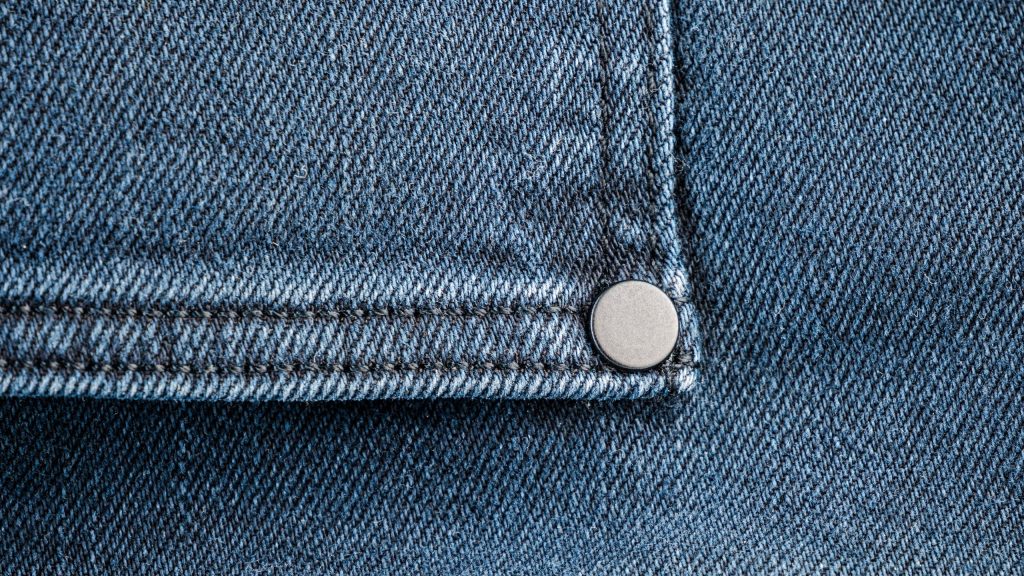Take a look at the corners of your jean pockets. You’ll see a few metal dots that weren’t created for mere decoration, nor were they on the first pairs of jeans that appeared in the American West. No, the history behind rivets on jeans is far more interesting than anybody gives them credit for.
Time to find out more about them.
Work pants in the American West before rivets
In the time before rivets, workers in mining towns & railroad camps would wear heavy cotton fabrics because these could deal with whatever the weather threw at them. The fabric held up fine. People knew denim & cotton duck were tough materials. However, the stitching in the pockets wasn’t so great, and the seams constantly tore.
It forced tailors to keep patching the same spots since the thread wasn’t as strong as the cloth for the pants themselves. It didn’t matter how hard-wearing the denim was. The corners always gave out.
Jacob Davis and the first riveted pants
Jacob W. Davis was the first person to try something different with pants. He was a working tailor in Nevada who created a number of sturdy products, including wagon covers & tents. Davis often used fabric from Levi Strauss’s (sound familiar?) business.
Davis decided he would start fastening little metal pieces through the places where the pants most often ripped. These copper rivets went through the cloth in the corners. It kept the seams from splitting so easily & customers noticed their pants lasted longer. Davis soon had many requests for these reinforced pants.
Partnering with Levi Strauss in San Francisco
Davis tried to patent the design. Unfortunately, that wasn’t cheap, and he didn’t have enough money to file alone, so he wrote to Levi Strauss in 1871. He asked Strauss if he wanted to work together. Strauss agreed.
The pair agreed to share the patent, with Davis bringing the idea and Strauss supporting the filing & production. Davis later moved to San Francisco to help the company’s operation on Fremont Street. That’s where the riveted pants became a real product.
The 1873 patent
The U.S. Patent Office approved Patent No. 139,121 on May 20, 1873. It wasn’t exactly the most exciting title, as it was called an “Improvement in fastening pocket-openings.” But it completely changed the way our pants worked forevermore.
The patent itself wasn’t solely for jeans, though. The pair actually patented the method of putting metal fasteners at stress points where cloth pulls apart, rather than focusing on a specific type of material.
How early rivets were placed on jeans
However, those early rivets didn’t look exactly the same as the ones we have today. The first versions included copper rivets on the front pocket corners, as well as the bottom of the fly. They were also on the small front watch pocket. There was originally only one back pocket, so it took some time for rivets to appear on the rear.
Many local seamstresses sewed the earliest pairs of riveted jeans at home. The company then gathered them up to sell the pairs to customers before demand got too big. During this time, the pants weren’t known as jeans. They were actually called “waist overalls.”
What happened after the patent period
The patent lasted only seventeen years, the norm for that time. Other clothing companies invented their own riveted designs once the patent had ended, and several brands began making riveted work pants by the early 1900s. Each one had its own mix of metal & shapes.
A few companies added extra rivets to jeans, while others removed a few of them. A few would move the rivets around based on their own patterns. But even through the differences, the origins remained the same. They came from the 1873 design and earlier Nevada trials.
Rivets on modern jeans
Modern jeans don’t have rivets in the exact same spot as in the past. Designers decided to remove the back pocket rivets because they wanted to avoid scratching surfaces & they also changed the materials. New alloys and thread types also changed manufacturing procedures.
Even through all this, the purpose of rivets hasn’t changed. They strengthen the areas on our pants where the cloth layers meet & potentially rip. It doesn’t matter whether they’re from a small store or a huge brand, as the 1873 trick is still helping out.
The following sources were consulted in the preparation of this article:


